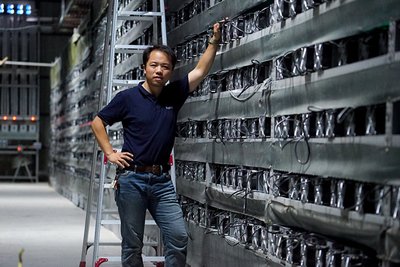In the ever-evolving world of cryptocurrency, mining Bitcoin in Asia presents a unique set of challenges and opportunities. As one of the largest hubs for crypto mining, the region attracts both enthusiasts and enterprises eager to capitalize on the digital gold rush. However, before diving into purchasing mining machines or investing in hosting services, it’s crucial to dissect the costs involved. From the initial outlay for cutting-edge ASIC miners to ongoing operational expenses, understanding the full financial landscape ensures miners can push profitability even amidst volatile market conditions.
At the heart of Bitcoin mining lies the mining rig—a specialized device designed to solve complex algorithms quickly. Asia, especially countries like China, Kazakhstan, and Malaysia, serves as a massive production and deployment base for these rigs. The initial investment varies significantly depending on the miner’s hash rate and efficiency. Top-tier models like Antminer S19 Pro or WhatsMiner M30S++ can cost anywhere from $2,000 to over $12,000 per unit. Though the sticker price is hefty, these machines boast superior processing power promising faster block discovery and better energy consumption metrics, which become critical when electricity prices fluctuate.

Electricity is the lifeblood of mining farms. This expenditure dominates operational costs and can vary dramatically depending on location and energy sources. In countries like Kazakhstan and Vietnam, miners enjoy relatively low electricity rates ranging from $0.03 to $0.05 per kWh, providing them with an edge against competitors from regions where energy is more expensive. However, rising energy costs and environmental regulations are pushing some to pivot toward renewable sources such as hydroelectric and solar power. These efforts not only reduce the carbon footprint of mining operations but also stabilize long-term electricity expenses.
Beyond power consumption, cooling is another significant factor. Mining rigs generate immense heat as they crunch numbers nonstop; adequate cooling systems are therefore indispensable. In traditional setups, purpose-built data centers employ advanced air conditioning and ventilation layouts, sometimes complemented by immersion cooling technology that submerges mining rigs in dielectric liquids to enhance thermal management. These innovations, while capital-intensive at first, pay dividends through enhanced machine longevity and decreased downtime.

Hosting services have surged in popularity among miners unwilling or unable to manage their hardware personally. By leasing space in dedicated mining farms, operators can offload logistical challenges such as machine maintenance, electricity billing, and environmental controls to specialized providers. This arrangement often includes remote monitoring services, security, and technical support—which collectively reduce risk but introduce monthly hosting fees. Typically, these fees are calculated based on power consumption, uptime guarantees, and maintenance scope, ranging from $0.10 to $0.20 per kWh. For smaller miners or institutional players with large fleets, hosting can deliver scalability and operational efficiency.
The dynamic interplay between Bitcoin mining and altcoins like Ethereum (ETH) and Dogecoin (DOG) also influences equipment choices and strategies. While Bitcoin mining is exclusively ASIC-dominated, ETH and DOG retain substantial GPU mining communities, triggering a diverse demand for hardware types. Some Asian mining farms now diversify to maintain profitability against fluctuating mining difficulties and network rewards. Notably, Ethereum’s transition to a Proof of Stake model suggests future shifts, prompting miners to rethink investments in equipment and hosting solutions.
Furthermore, Asia’s thriving cryptocurrency exchanges facilitate easy liquidity conversion—vital for miners to offload earned Bitcoin promptly and hedge against price volatility. Exchanges like Binance (originating from Asia) and Huobi contribute to a robust ecosystem where mined coins can be traded, staked, or swapped for other digital assets almost instantaneously. Some miners also explore decentralized exchanges to avoid centralized risks, further diversifying their portfolio.
As regulations tighten and competition stiffens, miners in Asia are increasingly adopting sophisticated management tools and analytics software. These platforms track hardware performance, electricity consumption, and market trends in real-time, enabling proactive decision-making. The surge in AI-driven mining optimization algorithms exemplifies how technology is streamlining operations, reducing human error, and maximizing output despite fluctuating cryptomarkets.
In summary, Bitcoin miners in Asia face multifaceted costs extending well beyond machine acquisition. Energy consumption, cooling infrastructure, hosting expenses, hardware maintenance, and regulatory compliance collectively compose the financial tapestry of mining ventures. By diligent analysis and strategic resource allocation, miners can harness Asia’s technological ecosystem, robust exchanges, and favorable electricity markets to sustain profitable operations amidst the global crypto revolution. As this landscape matures, adaptability and innovative infrastructure will distinguish the leaders in this electrifying digital frontier.
This insightful analysis dives into the intricate economics of Bitcoin mining in Asia, highlighting fluctuating energy prices, equipment costs, and regulatory challenges. It explores regional variances, shedding light on how local policies and market dynamics influence profitability, making it a must-read for potential miners and investors alike.